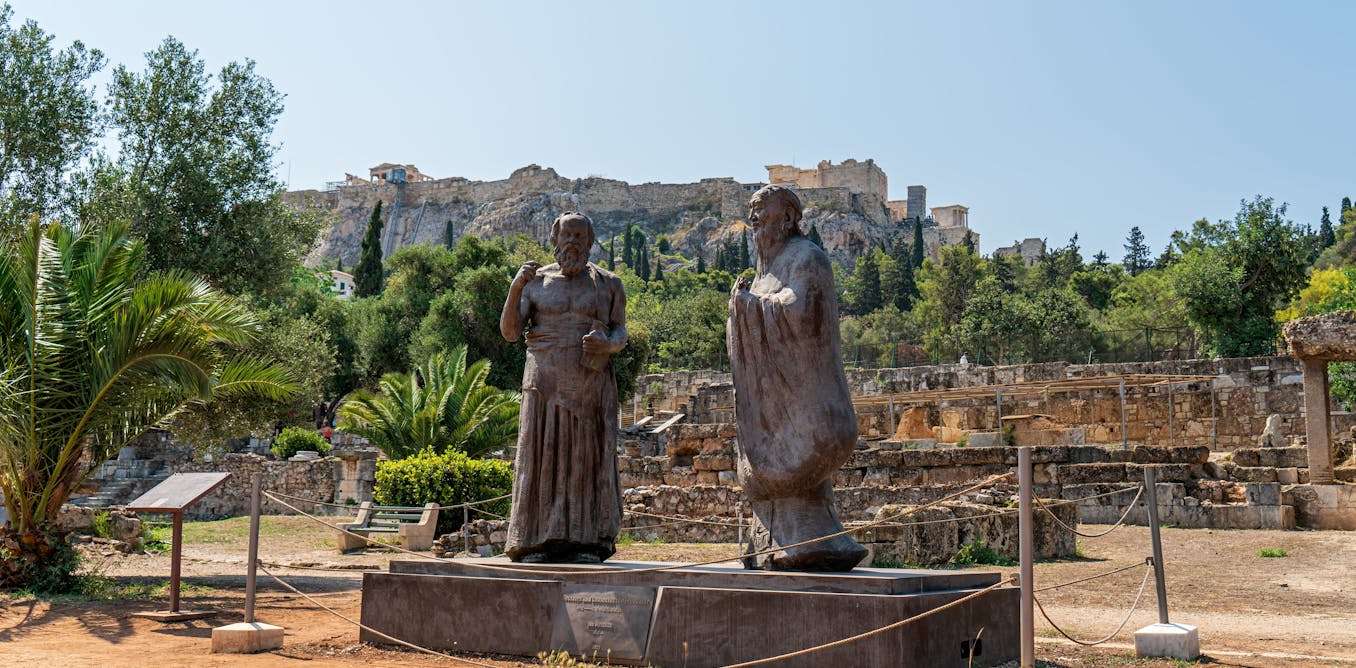Many writers (myself included) are more than willing to fight for their byline. Having your name on your work not only ensures you get paid, but it also serves as a mark of distinction. If others enjoyed what they read, they know exactly where to get more. Additionally, there is something deeply satisfying about having your name on a strong piece of writing.
But some writers will fight just as hard to keep their contributions a secret. In fact, if you survey history’s great authors, you’ll discover that a surprising number published more than a few of their works pseudonymously.
Here, we’ll look at five great authors who wrote diligently only to have an alias take credit for their efforts. We’ll also explore the reasons they kept their identities hidden from the public and how common those reasons have proven to be.
Mary Ann Evans (aka George Eliot)
George Eliot was a 19th-century English writer. His works, particularly Middlemarch, A Study of Provincial Life (1871–72), have enjoyed sweeping praise for their depictions of provincial life, the realism of the stories, and the psychological depths of the characters. But in what may be the worst kept secret of the publishing world — until the next entry on this list, at least — he was actually a woman, and her name was Mary Ann Evans.
Evans thought little of the novels written by, and for, women in her day. So, she took up a male pen name in the hope she would be taken more seriously as a novelist while also avoiding the stereotypes attributed to women authors. She was also a well-known literary critic already and wished to have her fiction viewed on its own merits.
Her true identity was revealed after the success of her novel Adam Bede (1859). Despite the public knowing who George Eliot was, her books remained extremely popular, and she continued to publish under the name. Her grave even lists “George Eliot” above her legal name.
The fear of having gender stereotypes applied to their work is a common reason for authors to use a nom de plume. The Brontë sisters all initially used male pen names. This was both to hide that they were women and to prevent their neighbors from knowing they were published. Amantine Lucile Aurore Dupin de Francueil became “George Sand” to be taken more seriously as a writer and critic, as well as to play with concepts of gender. In the process, she became the best-selling author in Europe by age 27.
More recently, Joanne Rowling, author of the Harry Potter series, used the pen name “J.K. Rowling” as a result of her publisher’s concerns that her gender would negatively impact sales.
Stephen King (aka Richard Bachman)
Have you ever wondered if your work is as good as people say it is? What if what they really like is you and not the work itself? If so, don’t feel too bad. It happens to a lot of people — among them American horror novelist Stephen King.
King had his first hit with the release of Carrie (1974), but by 1977, he was confronted with the problem of not being able to release more than one book a year under his name. He was also growing concerned over whether his success was due to skill or dumb luck. To duck the first problem and address the latter concern, he wrote Rage (1977), a now out-of-print book about a school shooting, under the name Richard Bachman.
As part of his experiment, King explained in the introduction to The Bachman Books (1985), he did his best to prevent the pseudonymous novels from selling. Little to no marketing was done for them, for example. Even so, they sold respectably with The Running Man (1982) proving particularly successful. However, the secret slipped before King felt he had answered the question of “talent versus luck.” Matters were further complicated by the improved sales of the Bachman novels after the reveal.
Bachman was reported to have died of “cancer of the pseudonym” after the outing. However, his most recent book came out in 2007 (purported to be a found manuscript). And despite the failed experiment, King has made repeated references to his alter ego ever since.
King’s concerns are common among well-known writers and have launched the careers of many imaginary novelists. Robert Heinlein wrote so many works that they would be published under different names in the same magazines. Two of the more famed were “Anson MacDonald” and “Caleb Saunders.” Joanne Rowling has written as “Robert Galbrath,” in part to “to publish without hype or expectation.”
This approach is also popular outside of literature. The British rock group Led Zeppelin famously released their fourth album without either a title or any indication of who created it. It sold gangbusters anyway and quieted the critics who considered them over-hyped.
Søren Kierkegaard (aka Johannes de Silentio and others)
Søren Kierkegaard was a Danish philosopher working in the 1840s. Considered the “father of existentialism,” his writings focused on religion, ethics, morality, and the condition of the individual in 19th-century Western society. He has influenced thinkers such as Jean-Paul Sartre, Ludwig Wittgenstein, Martin Heidegger, Franz Kafka, and Carl Rogers. He is surprisingly popular in Japan, too.
One of the more difficult aspects of understanding the totality of Kierkegaard’s bibliography has been his prodigious use of pseudonyms. He employed 13 major pen names and a few that appeared infrequently, but exactly why is hotly debated. It was common for authors at the time to express viewpoints not necessarily their own using a false name. This could be the case as he expressed a wide range of stances — not all of them philosophically coherent.
For example, in Either/Or (1843) two authors, “A” and “B,” write about how they are working to become religious. They take different approaches to the task, and the editor, “Victor Eremita” (Victorious Hermit), notes that even the nature of how they organized their writings greatly differed from one another. Other characters explore other topics (some rather close to Kierkegaard’s life experiences) in ways that do not entirely match his demeanor.
This would also align with his desire to have people cite the pseudonym used in a given text. Some philosophers, notably Theodor Adorno, object to this take and instead argue that everything Kierkegaard published reflects a view he held (despite any resulting incongruence).
Alternatively, Kierkegaard believed (at least initially) in the potential of indirect communication when trying to engage with readers who were not philosophers or theologians. To that end, his pen names may have been signals as to which readers the texts were written for. At the beginning of his career, he signed his name to the religious works and devised new authors for his philosophy essays. He had to reveal himself when questions about the authors arose, and his philosophy turned out to be much more popular than his religious texts. However, he continued to use pseudonyms even after that point.
Lastly, it has been proposed that all of the pseudonyms are “characters” engaging with one another as part of a larger project. This is seen multiple times in his writing. For example, “Anti-Climacus” takes aim at the project of “Johannes Climacus” in The Sickness unto Death (1849). Even “S. Kierkegaard” is itself a kind of pen name — playing a role similar to that of all the others. However, this bold stance remains controversial.
For his part, Kierkegaard did try to explain himself in The Point of View of My Work as an Author (1859). However, his explanation that his pseudonyms are all serving certain religious ends has struck many as an after-the-fact justification rather than the truth. Even Kierkegaard seemed to agree that the author should not always be taken literally.
While Kierkegaard fans may have to take his false names more seriously than those of any other philosopher, he was not the only one to use them. François-Marie Arouet published under, and is eternally known by, a pen name: Voltaire. That was just one of the nearly 200 pen names he used during his lifetime for various reasons — including to avoid the authorities when his writing became just a little too radical.
Benjamin Franklin (aka Richard Saunders and others)
Benjamin Franklin was an American scientist, journalist, politician, philosopher, and Founding Father. Well-known in his time, he has left an indelible mark on American history. Many of his witticisms, such as “Time is money,” are still regularly quoted (though that one was kind of stolen).
Franklin had a long and curious life, one that often required not always being on record. This began as a teenager when he wrote letters to his brother James’ newspaper as “Silence Dogood.” In the guise of the widowed Mrs. Dogood, Franklin offered amusing observations of life in colonial America. Her writings proved so popular that some men offered to marry the dowager. He then wrote a somewhat risqué critique of Dogood as “Ephraim Censorious,” which was also published.
Unfortunately, his brother eventually found out who was writing the letters and forced Benjamin to stop. This, alongside the difficulties of working under him, contributed to Franklin’s decision to flee to Philadelphia, which he technically did as a criminal as he was still his brother’s indentured apprentice.
Franklin found fame and success in publishing Poor Richard’s Almanack (1732–58) under the guise of “Richard Saunders” and later as “Poor Richard.” This was not an uncommon practice at the time. Many publishers of similar almanacs used pseudonyms. Franklin’s characters allowed him to make jokes, provide framing for the articles in the publication, and gain some distance between himself and the printed material. Amusingly, while it was well known at the time that Franklin wrote and published the Almanack, “Saunders” repeatedly claimed to be a real person in the text.
Franklin would go on to use more than a dozen pen names in his life. Each is a different character. “Americanus” was more worldly than “Homespun,” and neither of them wrote an letter on flatulence.
As with Kierkegaard, Franklin does not entirely agree with everything he had his characters say nor did he live up to the virtues his publications promoted. By putting on the masks, he was able to write more freely than if he were just “Ben Franklin.”
In addition to his enjoyment of inventing characters to write as, he also wrote a few things that he wisely kept his own name away from. These included a letter advising a young man to only look to older women as mistresses. Many of his views (and for that matter, life choices) were controversial for the times, and it was easier to put them behind another name — especially for a man with an interest in politics.
Plausible deniability where politics is concerned was nothing unique. Before the Revolutionary War, John Adams wrote as “Humphrey Ploughjogger” in critiques of colonial government. The Federalist Papers were written by “Publius,” a stand-in for Alexander Hamilton, John Jay, and James Madison. In fact, the debate over the American constitution prompted many of the Founding Fathers to write under false names — many of them obvious allusions to the Roman Republic or ancient philosophy.
Sir Issac Newton (aka Jehovah Sanctus Unus)
Issac Newton was an English polymath and one of the greatest scientific minds ever to grace the world. By the age of 26, he had determined the laws of motion and gravity. He also devised calculus, formulated the three-body problem, advanced the study of optics, and invented the reflecting telescope. Suffice it to say, Newton was a brilliant thinker.
So it is no small shock to many to learn that Newton spent a tremendous amount of time studying alchemy and what we now call the occult. He almost certainly tried to discover the philosopher’s stone and perhaps even the elixir of life. He tried to determine the dates of the apocalypse and researched what he saw as the sacred, symbolic architecture of Solomon’s Temple.
Many of these works are lost — a fire in his lab consumed many of his manuscripts while others were unpublished during his lifetime. A few were hidden behind pseudonyms, including “Jehovah Sanctus Unus” — which translates to “Jehovah, the Holy One.”
The reason for the false name was comparatively simple: What he was doing was technically heresy. Practicing alchemy was also highly regulated for fear that somebody really would find a way to turn lead into gold and destroy the money supply. (Ironically, Newton would later be appointed Warden of the Royal Mint in 1696).
Newton is far from the only great thinker to hide behind a pseudonym for the sake of security. Nicolaus Copernicus distributed an early version of his heliocentric theory anonymously in the manuscript Commentariolus (1514). The final version of his theory was published only as he lay dying. Galileo wrote as “Alimberto Mauri” during a debate over a supernova in 1604. Not only was it rather harsh in its criticisms of another astronomer, but it pointed towards his later theories. Furthermore, it has been proposed that the pen name kept him out of contentious, and perhaps dangerous, Italian politics.
This article 5 famous authors who used pseudonyms (and why they did it) is featured on Big Think.

The post “5 famous authors who used pseudonyms (and why they did it)” by Scotty Hendricks was published on 02/18/2025 by bigthink.com


































Leave a Reply